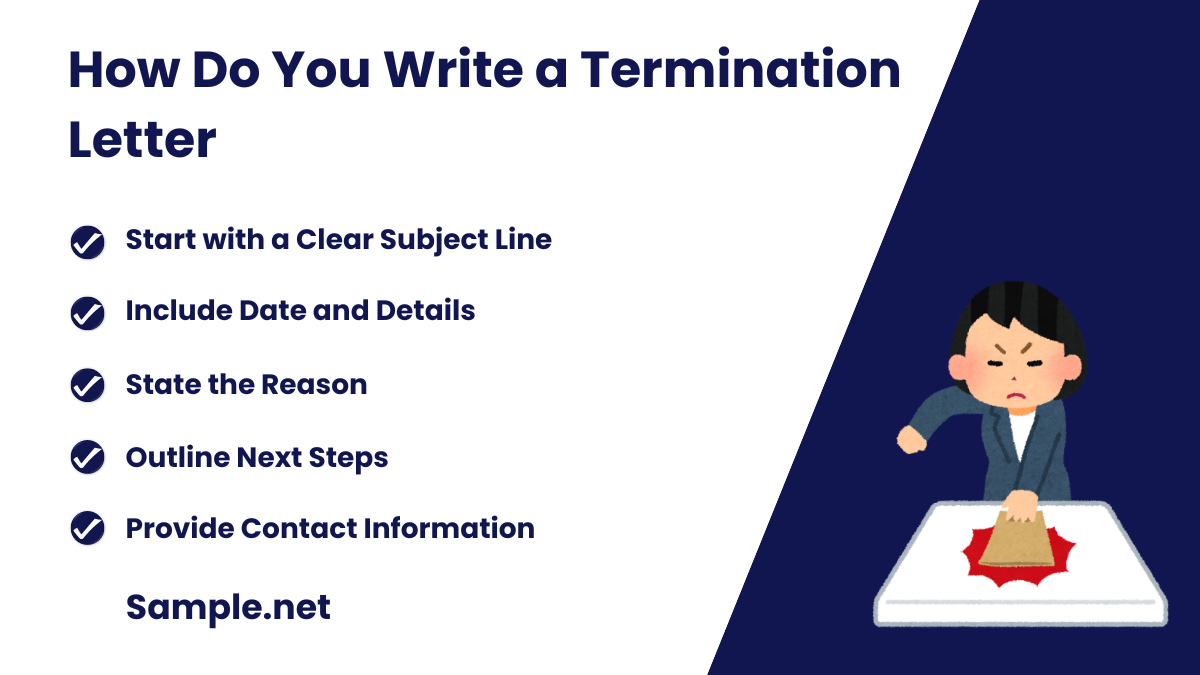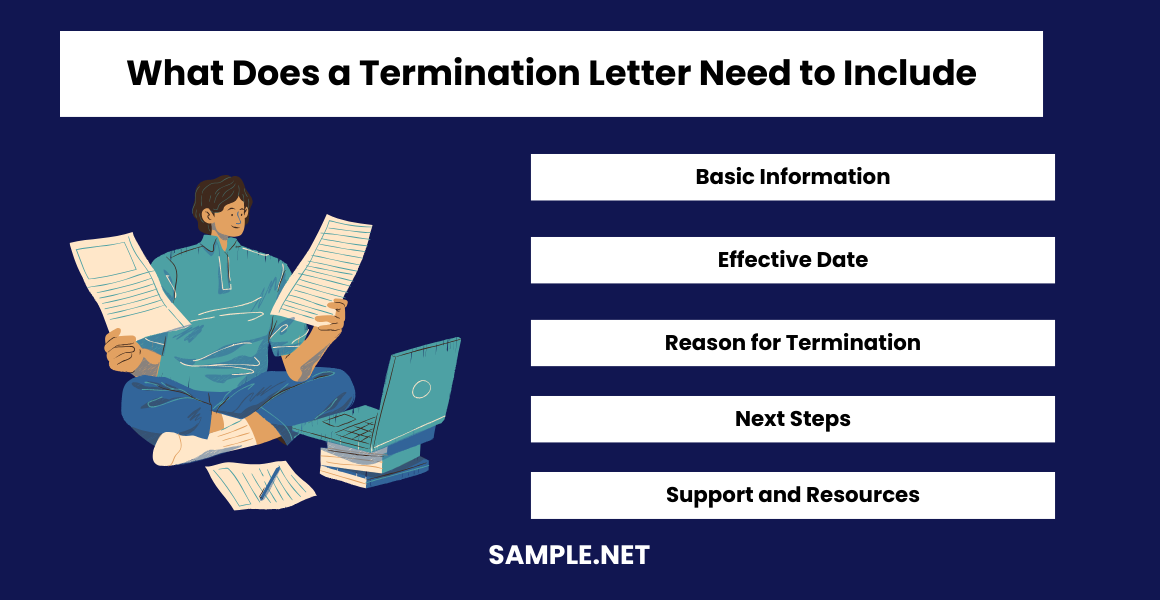Termination Letter Samples
-
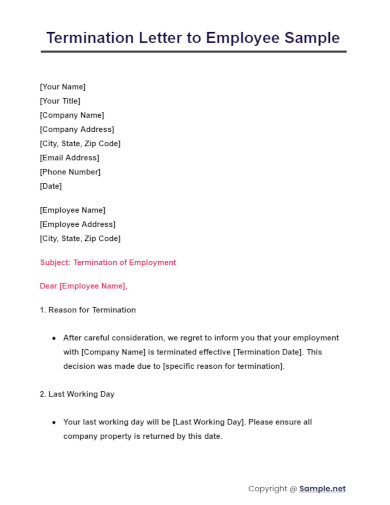
Termination Letter to Employee Sample
download now -
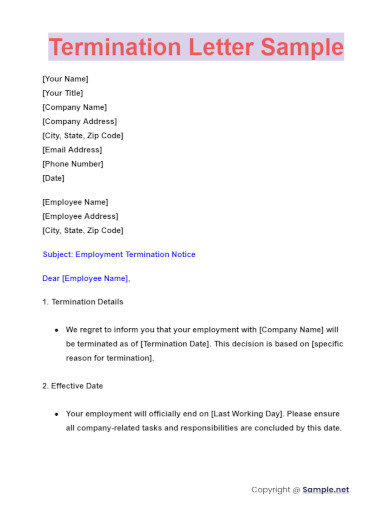
Termination Letter Sample
download now -
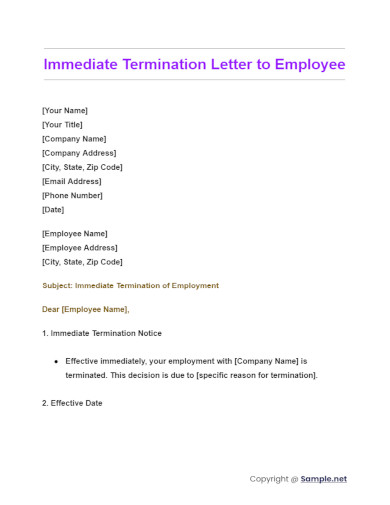
Immediate Termination Letter to Employee
download now -
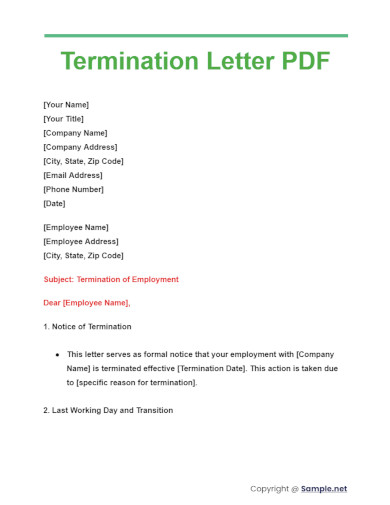
Termination Letter PDF
download now -
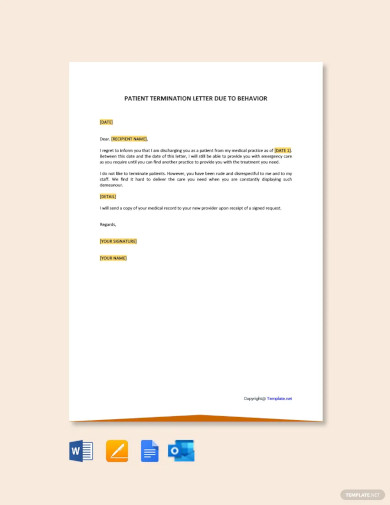
Patient Termination Letter Due To Behavior Template
download now -
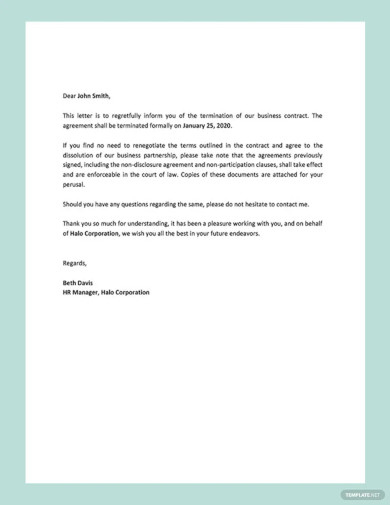
Editable Business Contract Termination Letter Template
download now -
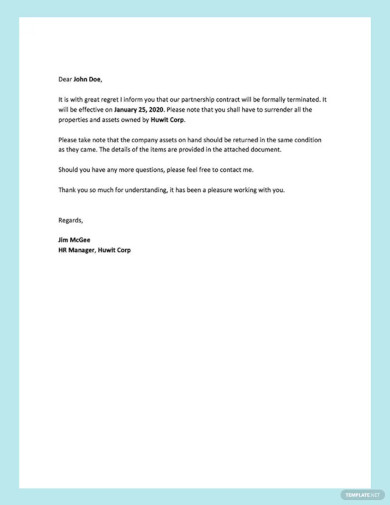
Contract Termination Letter Template
download now -
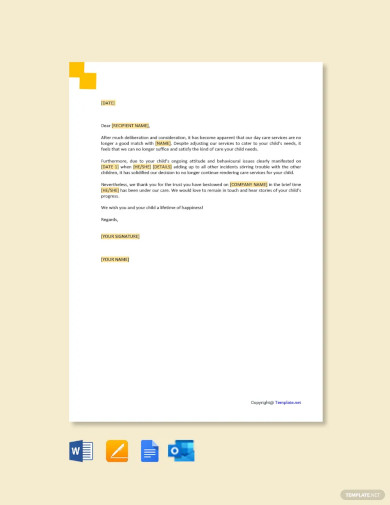
Daycare Termination Letter for Behavior Template
download now -
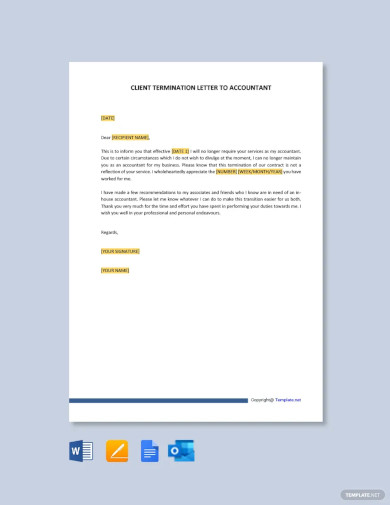
Client Termination Letter To Accountant Template
download now -
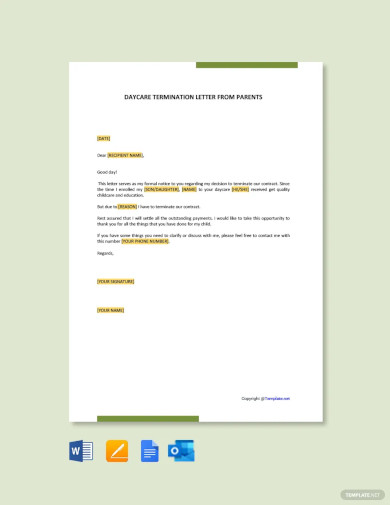
Daycare Termination Letter from Parents Template
download now -
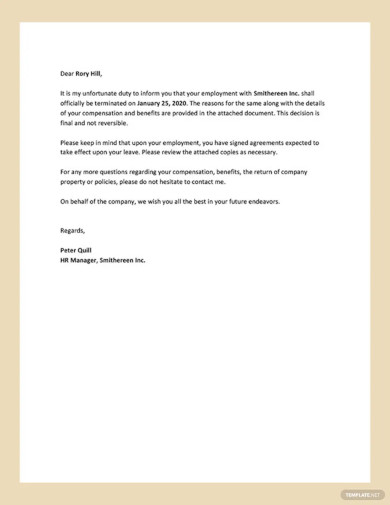
Employee Termination Letter Template
download now -
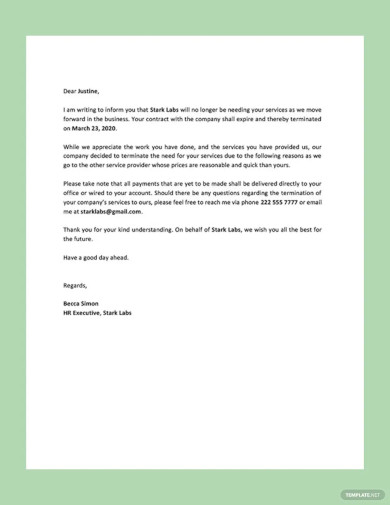
Service Termination Letter Template
download now -
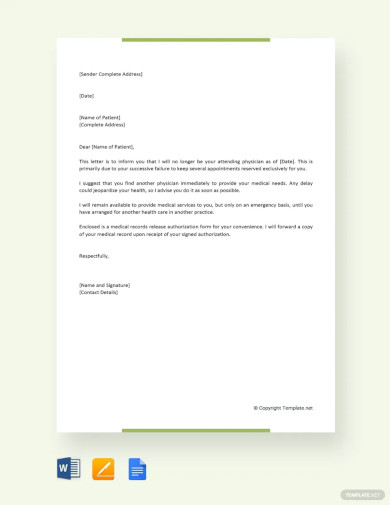
Patient Termination Letter No-Show Template
download now -
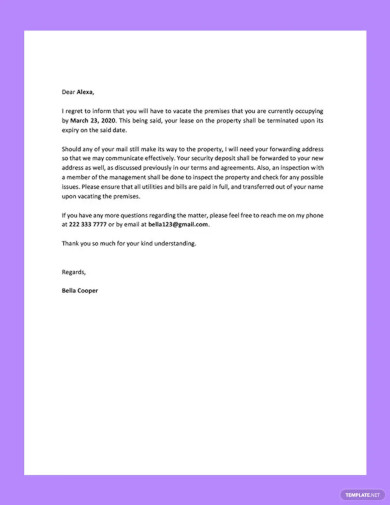
Lease Termination Letter Template Landlord to Tenant
download now -
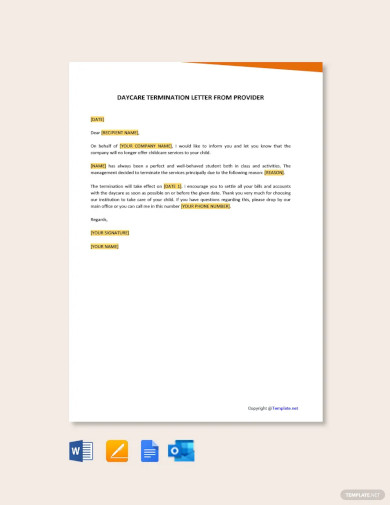
Daycare Termination Letter From Provider Template
download now -
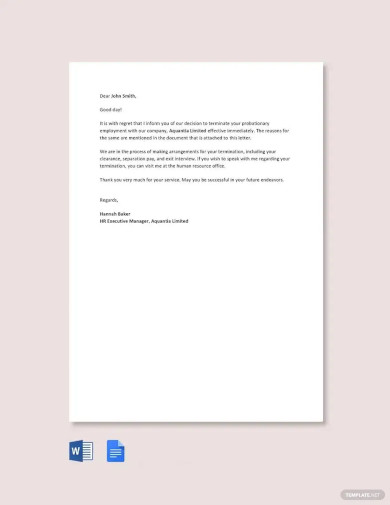
Probation Termination Letter Template
download now -
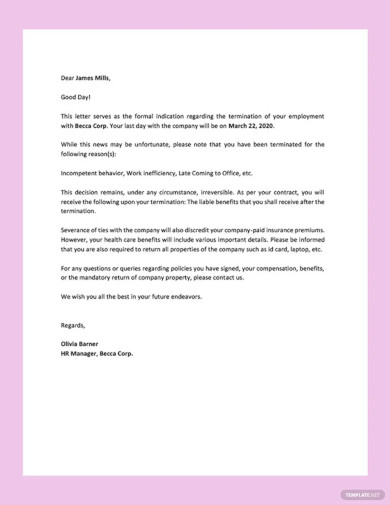
Simple Termination Letter Template
download now -
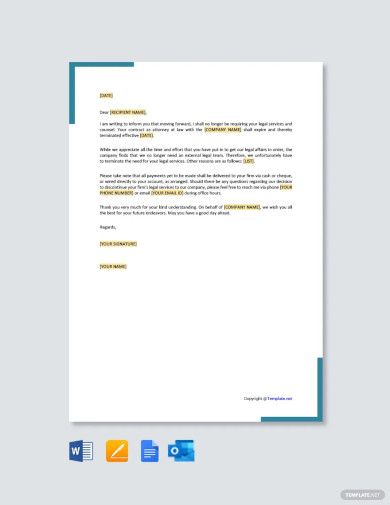
Attorney Termination Letter Template
download now -
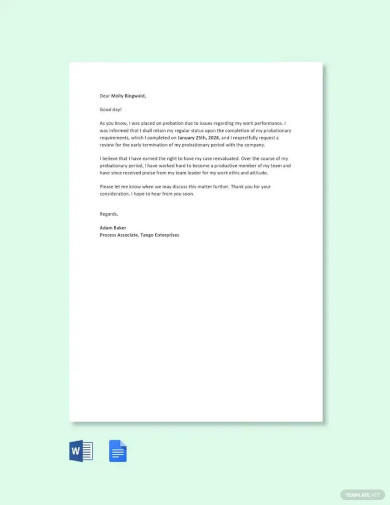
Early Probation Termination Letter Template
download now -
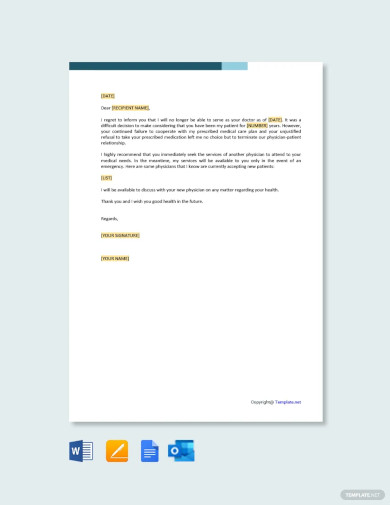
Patient Termination Letter Due to Non-Compliance Template
download now -
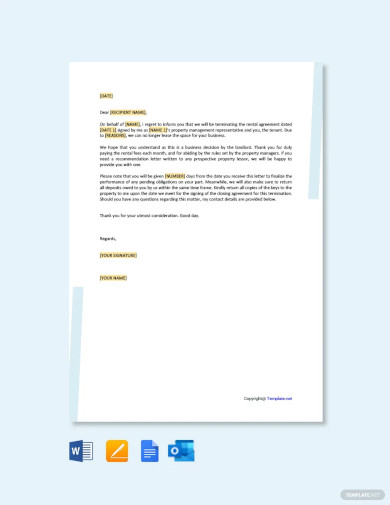
Free Rental Termination Letter From Landlord to Tenant Template
download now -
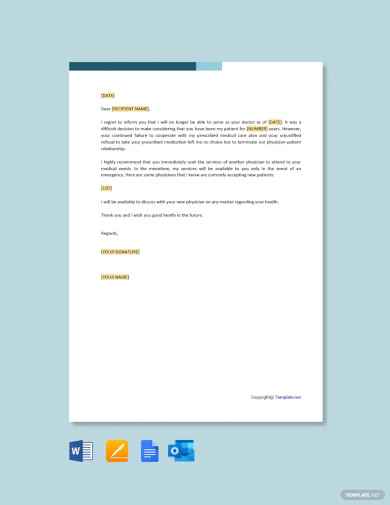
Sample Patient Termination Letter Due to Non-Compliance Template
download now -
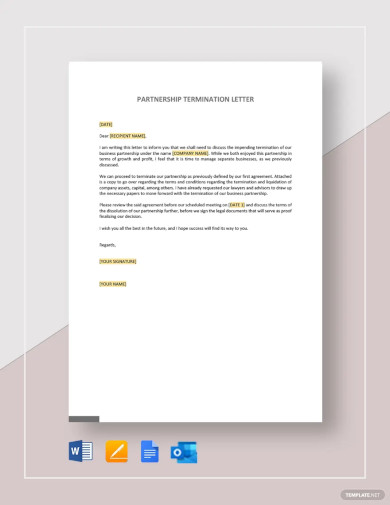
Partnership Termination Letter Template
download now -

Termination Letter – Substance Abuse Template
download now -
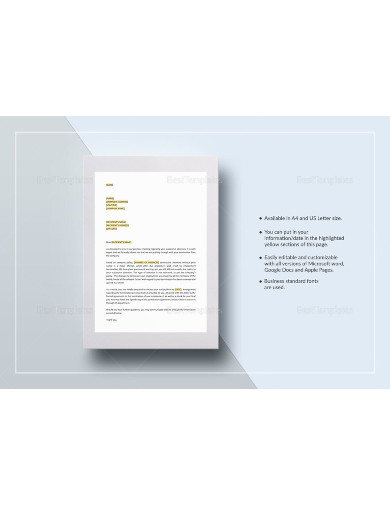
Termination Letter – Excessive Absenteeism Template
download now -
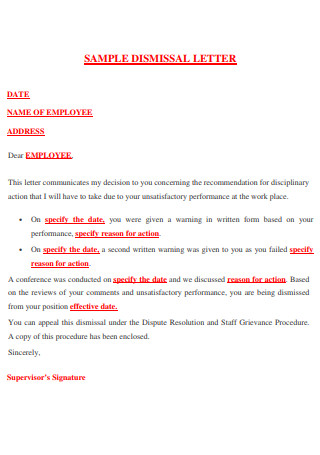
Sample Dismissal Termination Letter
download now -

Sample Polite Termination Letter
download now -
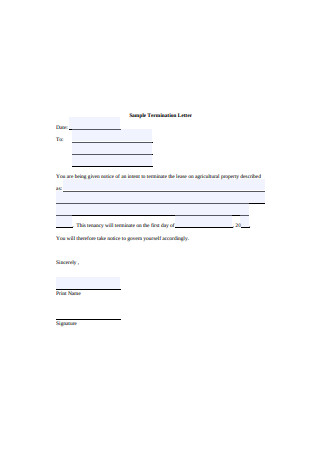
Sample Work Termination Letter Form
download now -
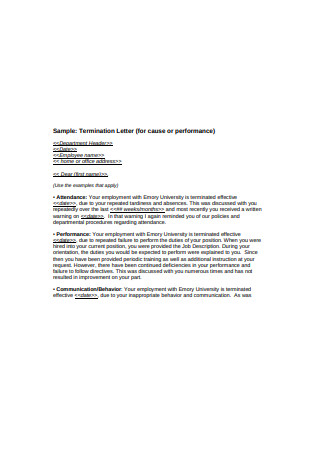
Vendor Termination Letter
download now -
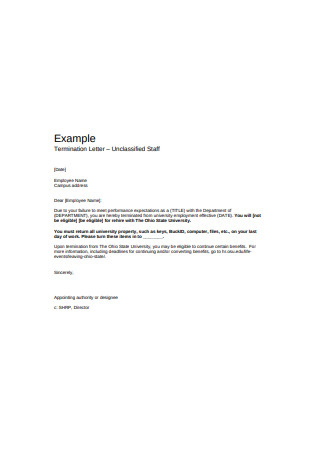
Unclassified Staff Service Termination Letter
download now -
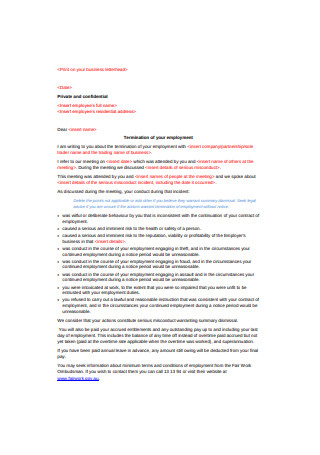
Letter of Termination of Short Employment
download now -
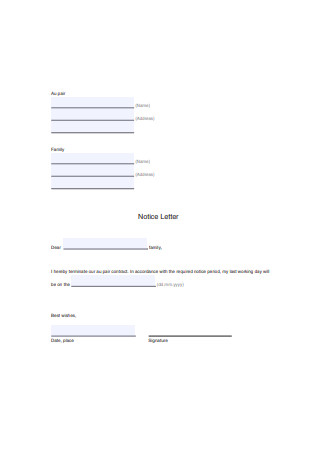
Agent Termination Notice Letter
download now -
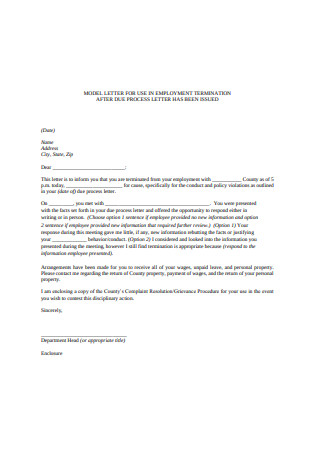
Model School Letter Employment Termination
download now -
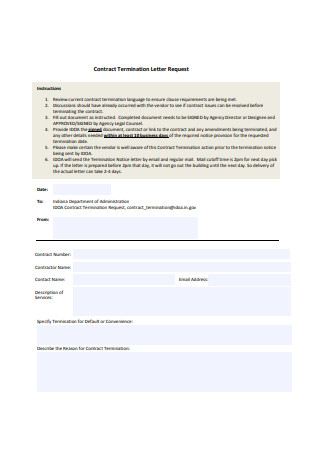
Medical Contract Termination Letter Request
download now -
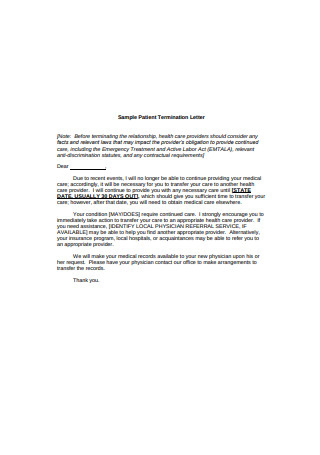
Sample Child Care Patient Termination Letter
download now -
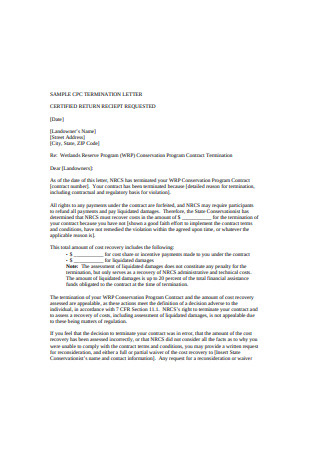
Simple Teacher Termination Letter
download now -
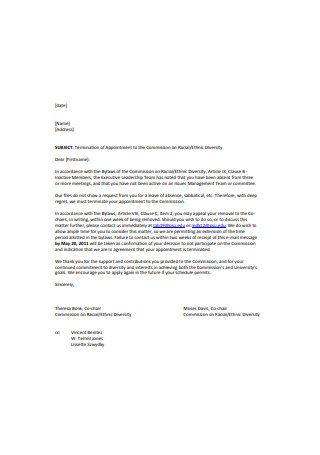
Termination Legal Appointment Letter
download now -
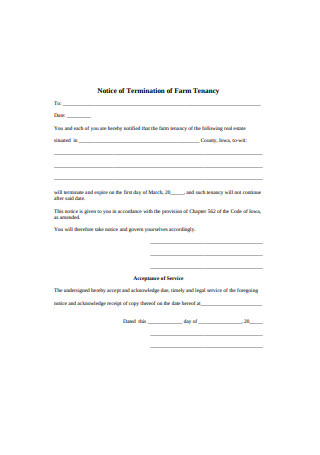
California Notice of Termination Letter
download now -
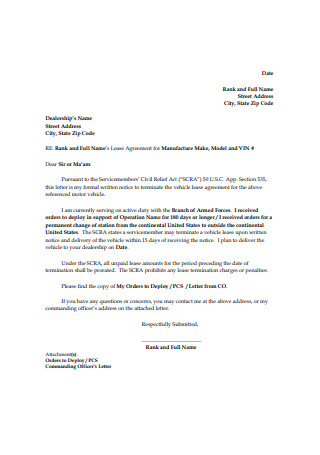
Motor Vehicle Insurance Lease Termination Letter
download now -
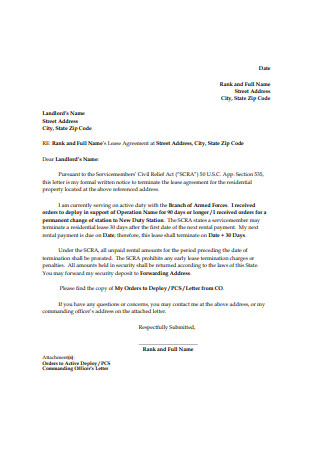
Residential Lease Resignation Termination Letter
download now -
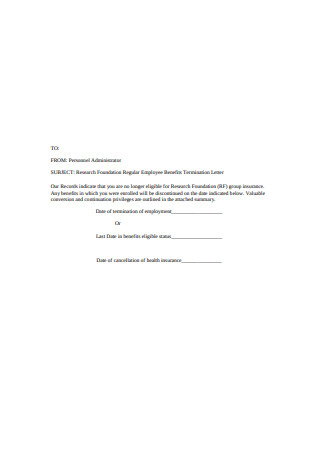
Termination Redundancy Notice Letter
download now -
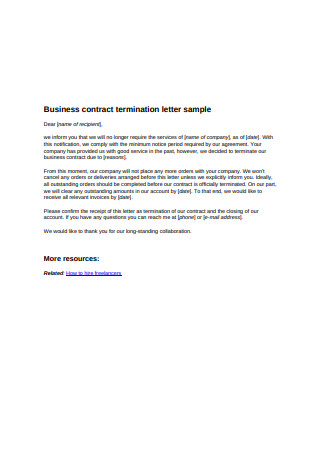
Business Due Contract Termination Letter Sample
download now -
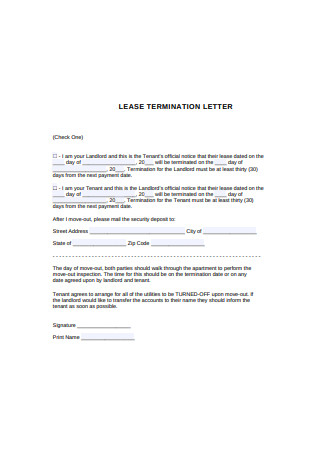
Lease Termination Official Letter
download now -
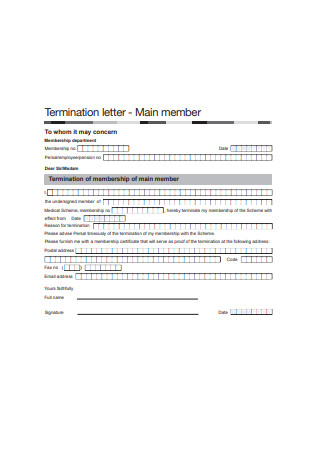
Physician Termination Letter Form
download now -
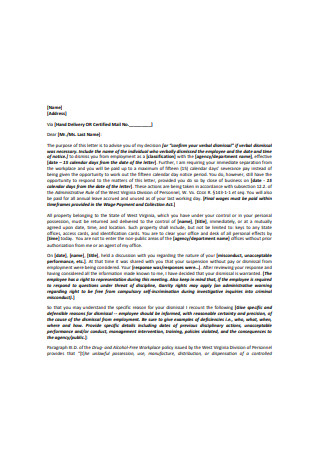
Basic Termination Letter
download now -
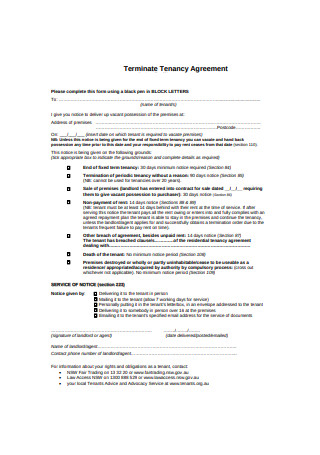
Terminate Tenancy Agreement Letter
download now -
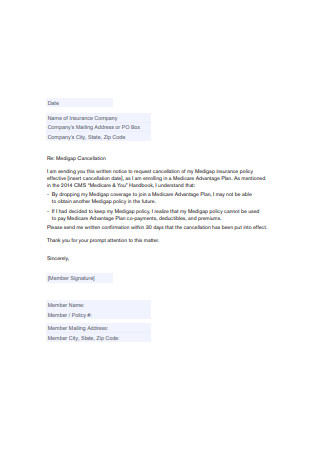
Formal Termination Letter
download now -
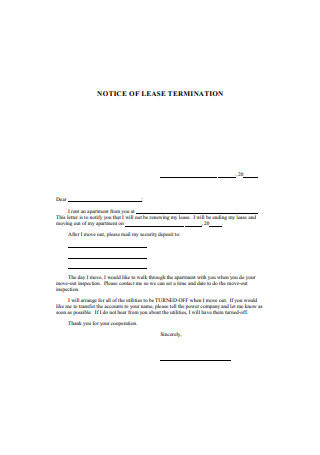
Notice of Lease Termination Letter
download now -
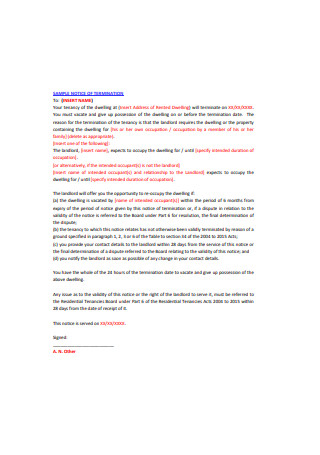
Landlord Termination Letter Notice
download now -
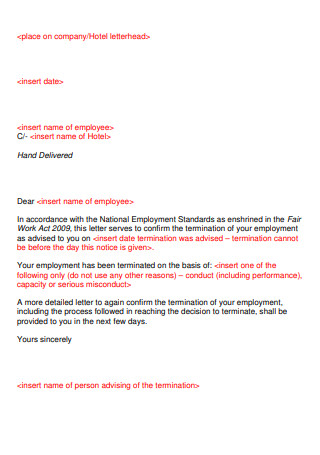
Standard Termination Letter
download now -
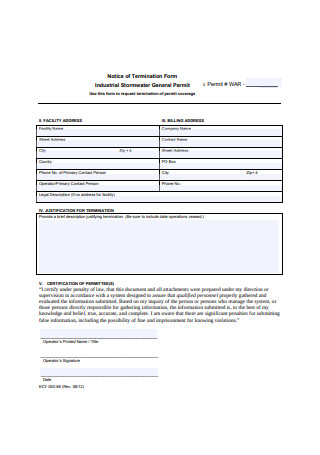
Notice of Termination Letter Form
download now -
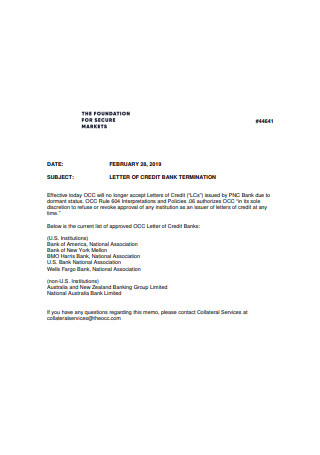
Letter of Credit Bank Termination
download now -
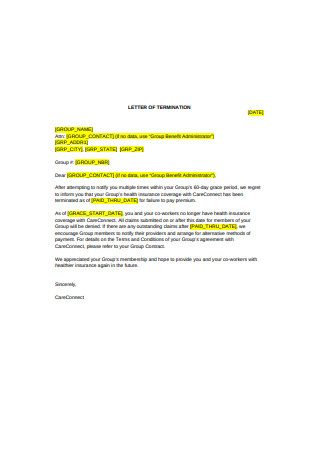
Contract Termination Letter
download now -
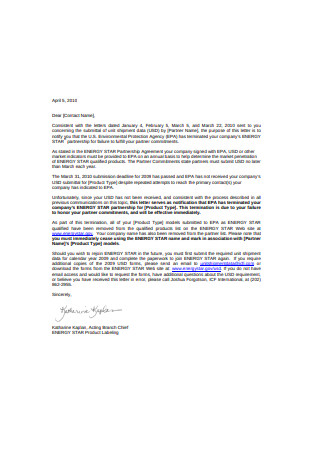
Employee Termination Letter
download now -
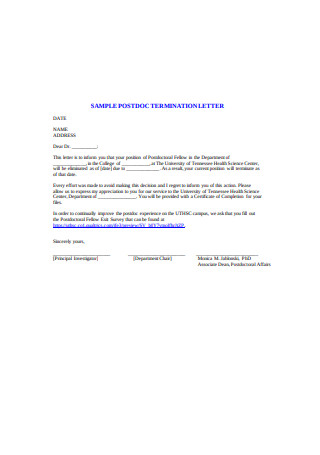
Sample Postdoc Termination Letter
download now -

Sample Held for Tenant Termination Letter
download now -
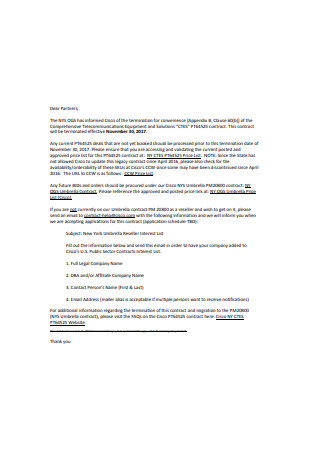
Partners Termination Letter
download now -
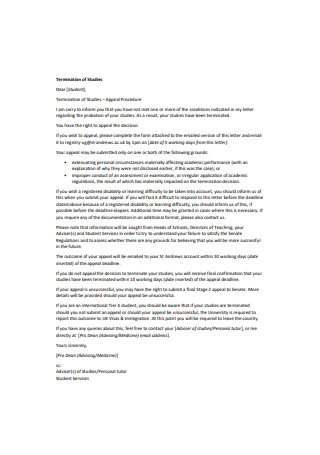
Student Termination Letter
download now -
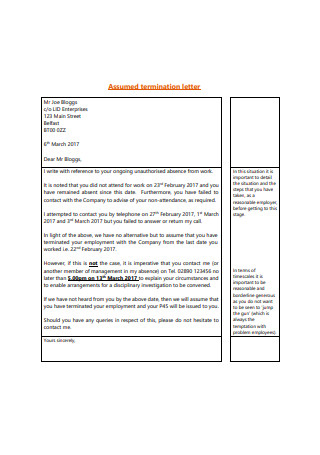
Assumed Termination Letter
download now -
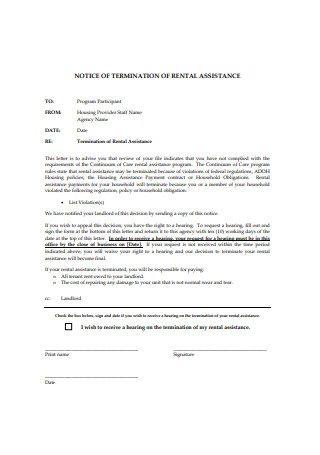
Notice Letter of Termination for Rental Assistance
download now -
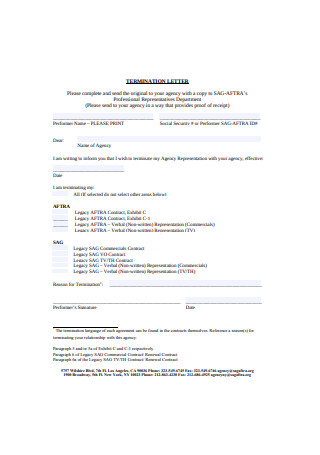
Termination Letter Form Format
download now -

Termination Letter after Updated Social Security Number
download now -
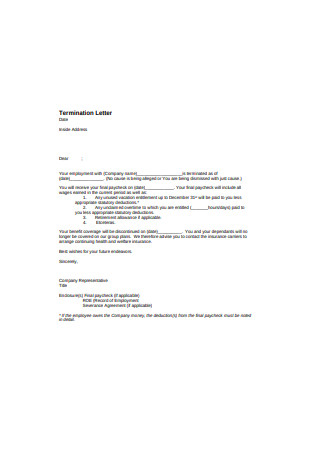
Employee Termination Letter Sample
download now -
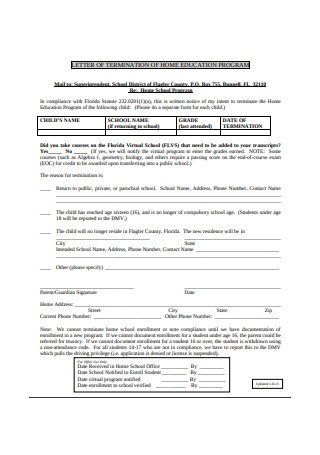
Letter of Termination for Home Education Program
download now -
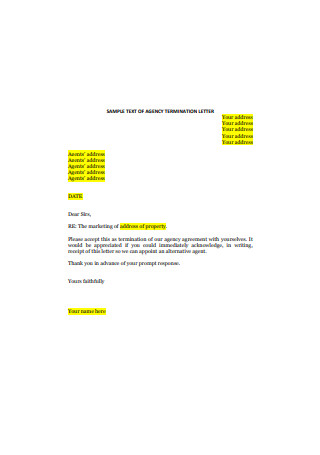
Sample Text of Agency Letter Termination
download now -
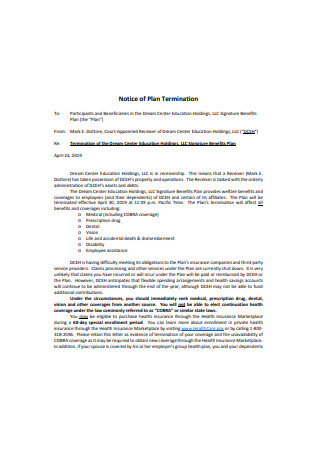
Plan Termination Letter
download now -
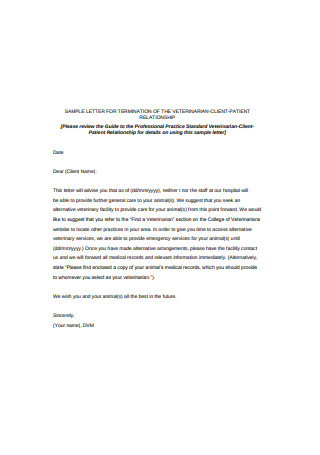
Veterinarian Client Patient Termination Letter
download now -
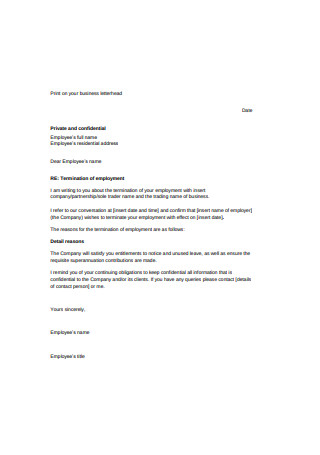
Professional Employee Termination Letter
download now -
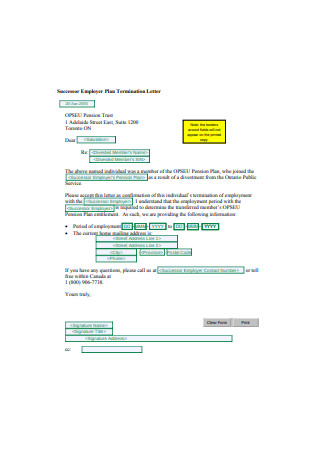
Successor Employer Plan Termination Letter
download now -
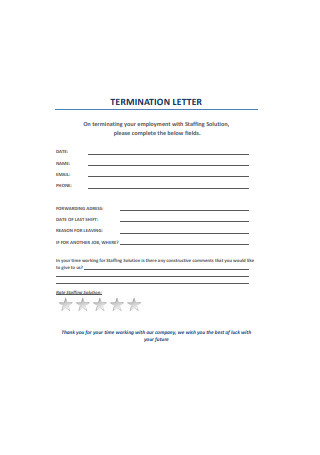
Termination Letter Format
download now -
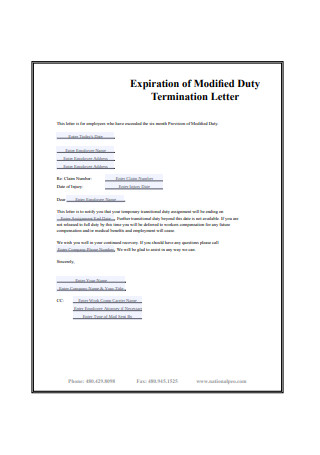
Expiration of Modified Duty Termination Letter
download now -
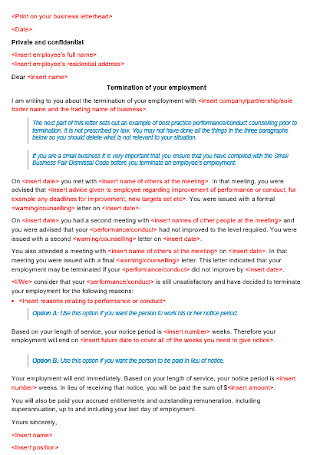
Employment Termination Letter Template
download now -

Employee Termination Letter Template
download now
FREE Termination Letter s to Download
Termination Letter Format
Termination Letter Samples
What is Termination Letter?
The Elements of a Termination Letter
How to Write a Termination Letter
The Dos and Don’ts of a Termination Letter
How Do You Write a Termination Letter?
What Is a Proof of Termination Letter from Employer?
What Does a Termination Letter Need to Include?
What Is the Standard Letter of Termination?
What Not to Include in a Termination Letter?
Is Termination the Same as Fired?
What Is a Termination Letter For?
Does a Termination Letter Mean You Were Fired?
What Is a Wrongful Termination Called?
Is Termination Bad on Your Record?
Can Termination Mean You Quit?
Is a Termination Letter Legally Binding?
Download Termination Letter Bundle
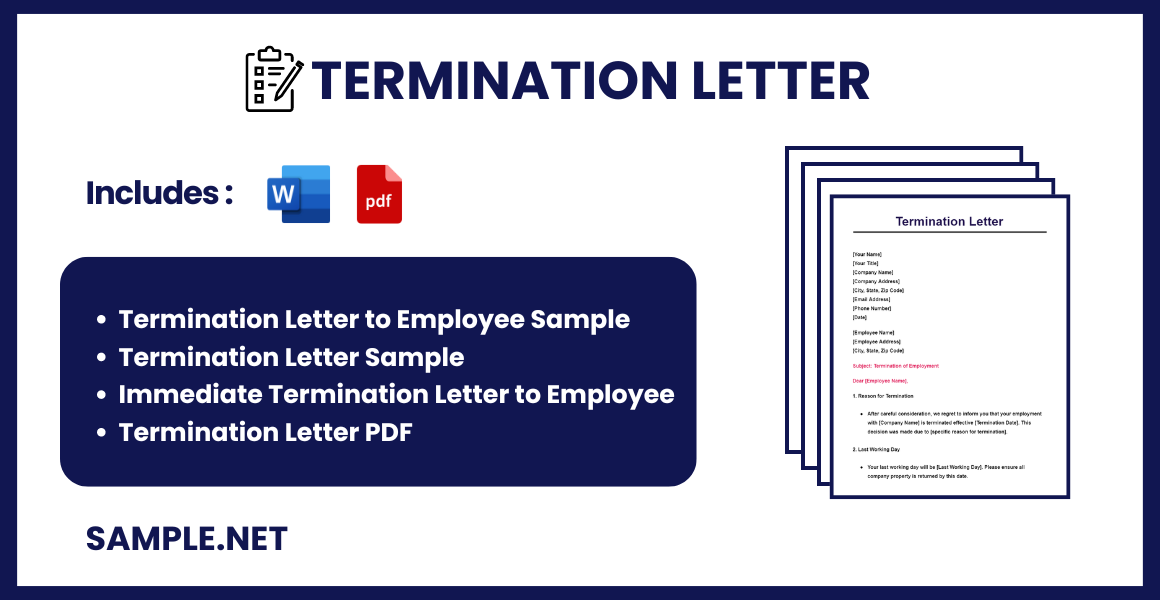
Termination Letter Format
[Your Name] [Your Address] [City, State, Zip Code] [Email Address] [Phone Number] [Date]
[Employee Name] [Employee Address] [City, State, Zip Code]
Subject: Termination of Employment
Dear [Employee Name],
1. Reason for Termination
- Specific Reasons for Termination
- Previous Warnings or Discussions
2. Last Working Day
- Date of Termination
- Transition Plan
3. Final Compensation
- Details of Final Pay
- Benefits Information
4. Return of Company Property
- Items to be Returned
- Deadline for Return
5. Conclusion
- Final Remarks
- Contact Information for Further Queries
Sincerely,
[Your Name]
What is Termination Letter?
A Termination Letter is a formal document used to notify an individual or entity of the end of an agreement or employment. It includes details such as the reason for termination, effective date, and any next steps required. A well-crafted Termination Letter ensures clear communication and legal compliance.
The reasons why employers terminate their employees are quite numerous. The Balance Careers cites several of the most common reasons, with the most prevalent ones being constant tardiness (41%), social media policy violations (33%), and wasting time at the office or disrupting fellow employees (22%). According to Career Builder, there is another common reason for employee termination: calling in sick for a false reason, with around 33% of employers admitting to firing employees over this. From the same source, employees are revealed to have gone as far as to cite the following excuses for calling in sick: an exploding pressure cooker caused their sibling stress, a traumatic experience with a spider, ate too much birthday cake, and being bitten by a duck. Regardless of how far out an employee’s reasons may be for their behavior, termination should be taken seriously and dealt with in the most professional way as much as possible.
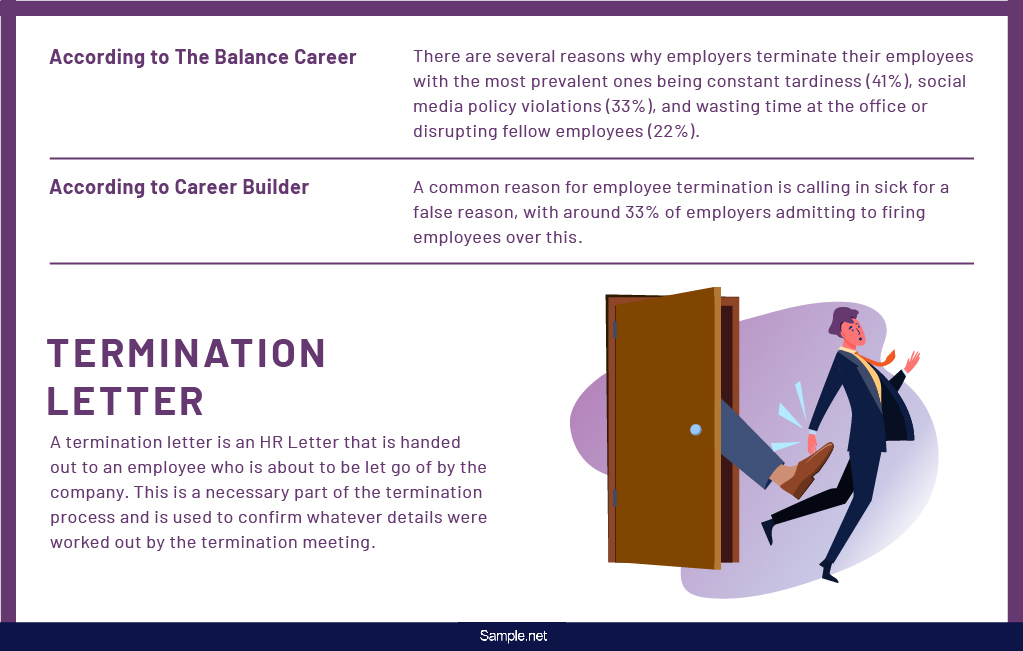
The Elements of a Termination Letter
Before you get started on writing the termination letter, it would be worth looking into the basic elements that you are going to encounter. There’s a lot to look into concerning termination letters so don’t waste any more time and dive headfirst into the list below.
How to Write a Termination Letter
Now that you know the basic elements, the next part involves putting them all together to form the termination letter as a whole. Below are the steps that need to be taken to achieve your desired outcome. Like many HR forms, this will mostly entail getting the details as accurately as possible and compiling everything in a professional format. The instructions are also guaranteed to help make the experience of letter-writing to be as easy and quick as possible for you.
Step 1: Identify the Employee and List Down His or Her Details
For the first step, you need to specify who the employee is. Write down his or her full name along with any important details. Said details will involve the company department that the soon-to-be terminated employee belongs to, his or her official position or job title, and the ID number.
Step 2: Identify the Person Handling the Termination Process
The next step of writing the termination letter would be determining and stating who will be responsible for handling or overseeing the entire termination process. This could be the direct manager or supervisor of the terminated employee or perhaps it could be the HR officer. Either way, write his or her name and position in the termination letter, even if it is just you.
Step 3: Specify What the Terminated Employee is Entitled to
Even terminated employees will still get something once they leave the company. This could be as minimal as their last paycheck or it could include other things such as complete severance packages. Whatever they may be, you need to identify the benefits in the termination letter.
Step 4: Discuss Company Property to be Returned by the Employee
The terminated employee will need to return any kind of property in his or her possession that actually belongs to the company. This may include laptops, phones, or any other kind of gadget. It may even go beyond that as long as it was loaned out for work purposes. List each thing down on the termination letter with the added statement detailing the specific date when the employee is to turn in each one.
Step 5: Discuss Other Legal Documents Involved
This part will depend on what has been agreed upon before when first hiring the employee in the first place. There may be certain legal documents that need to be upheld even after the termination. Your employee may be required to sign non-compete clauses or a non-disclosure agreement. In the event that those documents have already been signed, it would be wise to mention them anyway as a reminder of sorts.
Step 6: Proofread and Send it to Your Legal Team Before Sending it to the Employee
After all of that, your next job is to make sure that everything is as accurate as possible. Go over the letter and watch out for any typos, grammar issues, and even misinformation that you inadvertently included. From there you can send it to your company’s lawyer or legal team so that they can do their own review of the document. Only after you have double—and even triple—checked everything should you send it to the employee that you seek to terminate. You may also see Official Resignation Letter
The Dos and Don’ts of a Termination Letter
There are many things an employee can and cannot do per the regulations cited in their employee handbook. Likewise, employers would also be wise about the many dos and don’ts that comes with the termination process. Some of these have gone unspoken or unwritten for too long. Those who want to improve their termination letters will discover the following tips to be both incredibly helpful and full of useful insights.
Dos
Do cite the reasons for ending the employee’s tenure.
One simply does not get fired for no reason. When writing the termination letter, you need to acknowledge what those reasons are. Doing so will help the employee understand why this is happening and it will also serve as part of your company’s official documentation. Neglecting this can come back to bite you if ever your former employee decides to sue you over unlawful termination. In the event such a thing takes place, you will need as much documentation as possible.
Do remind the employee that the decision cannot be reversed.
The act of terminating an employee for whatever reason must be a decisive one. There will be those who believe that they can still save their jobs by trying to negotiate with their employers. By explicitly stating that you’ve made up your mind, you can put an end to such efforts before they have even begun. It will also set the right tone for the rest of the termination process so that all parties involved can move forward without too much of a hassle.
Do include an offer to provide any assistance provided that it falls within reason.
Part of what entails a smooth termination process is the continued cooperation of both parties until the very end. Whatever your soon-to-be former employee needs, if it is something that you can help with then, by all means, offer to do so. This may be nothing more than an act of courtesy but it can be helpful if your intentions include maintaining an amicable relationship with the employee. Many people move on from jobs fairly regularly and easily but nobody will ever forget being treated badly on their way out.
Do keep the letter’s tone as professional as possible.
This is likely to be the last document that the employee will receive from you before he or she is officially terminated. For image reasons, it would be wise to maintain a professional stance from the beginning until the very end. For more personal reasons, termination can be a difficult thing for anybody to accept and you do not want to worsen things by coming off as rude or too informal. Being considerate of the other person regardless of circumstances will never be a bad thing to do.
Do check with your company’s lawyer to see if there are potential legal issues to take care of.
As problematic as it can be to handle a toxic or under performing employee, an expensive lawsuit that starts with the former employee sending you a wrongful termination letter will be an even bigger headache. Make sure that you are completely within the boundaries of the law before you say or do anything. One way to ensure your company’s safety is to have a talk with a lawyer. Discuss the termination and see if there are pitfalls for you to avoid. You can even draft the termination letter with the lawyer’s help as a form of countermeasure.
Don’ts
Do not make any inappropriate jokes in the termination letter.
Those who work for small companies, such as startups, may feel like they are part of one big family. Some may even take these pseudo-familial feelings to such a strong extent that they are comfortable enough to joke around when it normally would not be appropriate. If you are close with the employee you are about to terminate, be aware that jokes are not welcome in a termination letter. That would be an incredibly unprofessional move that may come back to bite you at a later date. You may also see Excuse Letter
Do not be too informal with the terminated employee.
Related to the notion of familiarity breeding contempt, it isn’t just inappropriate jokes that need to be left behind when writing a termination letter. An informal tone just won’t make the cut anywhere. Termination needs to be treated as seriously as possible. Do everybody a favor and save any informality for more personal interactions. Considering how significant a letter like this is, anything less than professional should not be entertained. You may also see Authorization Letter
Do not neglect to talk about the last payment owed to the employee.
Regardless of whether the firing is abrupt or if the employee is required to vacate the premises immediately, it would lead to massive amounts of trouble if you do not do something about the last payment. When writing the letter, include a statement that addresses this issue. This will serve as proof that you did, in fact, act to uphold your end of the deal despite everything that has happened. You may also see Consent Letter
Do not neglect to specify when the employee’s last date at the company.
This tip will only be appropriate for those employees whose termination is more drawn out or not serious enough to warrant immediate dismissal. Specifying their last day on the job can help set reasonable expectations for all involved. If there is anything that needs to be accomplished still, like turning over equipment, then you will have given the employee the appropriate time to get it done. This also works to your advantage since it will show that in spite of all that has taken place, your professionalism and commitment to ending the working relationship amicably stood firm. You may also see Police Officer Resignation Letter
Do not neglect to remind the employee to provide you with his or her updated contact information.
There may be certain things that you cannot fulfill even with an appropriate number of days allotted before the terminated employee’s last day. This may involve delays with the compensation, equipment turnover, among other things. Reminding your former employee to keep in touch can help ensure that none of those things fall through the cracks and get forgotten. You may also see Email Resignation Letter
How Do You Write a Termination Letter?
Writing a Termination Letter involves clear communication, legal compliance, and respect for the recipient.
- Start with a Clear Subject Line: Clearly state the purpose, such as “Termination of Employment Letter.”
- Include Date and Details: Provide the date of termination and relevant details.
- State the Reason: Clearly explain the reason for termination.
- Outline Next Steps: Mention any procedures for returning company property or final pay.
- Provide Contact Information: Include contact details for any questions or further information. You may also see Professional Job Resignation Letter
What Is a Proof of Termination Letter from Employer?
A Proof of Termination Letter from Employer is an official document confirming the end of employment.
- Employer’s Information: Include the employer’s name, address, and contact details.
- Employee’s Information: State the employee’s name and position.
- Termination Details: Clearly mention the termination date.
- Reason for Termination: Provide a brief explanation for the termination.
- Signature and Date: Ensure the letter is signed and dated by the employer. You may also see To Whom It May Concern Letter & Email
What Does a Termination Letter Need to Include?
A Termination Letter must include essential details to ensure clarity and legal compliance.
- Basic Information: Include the names and contact information of both parties.
- Effective Date: Clearly state the date when the termination takes effect.
- Reason for Termination: Provide a brief and factual reason for termination.
- Next Steps: Outline any required actions, like returning company property.
- Support and Resources: Offer information about any support or resources available to the employee, aligning with Termination Agreement.
What Is the Standard Letter of Termination?
A Standard Letter of Termination follows a consistent format for clarity and professionalism.
- Formal Greeting: Address the employee formally.
- Clear Statement of Termination: Clearly state the termination.
- Reason for Termination: Provide a concise reason for termination.
- Details of Final Payments: Mention details about final paychecks and benefits.
- Next Steps and Support: Outline any next steps and available support, similar to a Tenancy Termination Letter.
What Not to Include in a Termination Letter?
Certain elements should be avoided in a Termination Letter to maintain professionalism and legal compliance.
- Emotional Language: Avoid using emotional or subjective language.
- Detailed Performance Issues: Do not include extensive performance critiques.
- Unnecessary Personal Information: Keep the letter professional and avoid personal details.
- Legal Jargon: Avoid complex legal terms that could confuse the recipient.
- Future Job Prospects: Do not comment on the employee’s future job prospects, ensuring the letter remains factual and neutral, like an Early Lease Termination Letter.
Is Termination the Same as Fired?
Termination and being fired both mean the end of employment, but termination can also refer to voluntary departure, unlike a Letter of Job Termination.
What Is a Termination Letter For?
A Termination Letter officially notifies an employee of their employment ending, providing reasons and details as per the Employee Termination Checklist.
Does a Termination Letter Mean You Were Fired?
Receiving a Termination Letter typically means you were fired, though it could also cover voluntary resignations or layoffs, similar to Resignation Letter documentation.
What Is a Wrongful Termination Called?
Wrongful termination is legally referred to as unfair dismissal or unlawful termination, often leading to disputes over the Best Job Termination Letter.
Is Termination Bad on Your Record?
Termination can negatively impact your employment record, potentially affecting future job prospects, similar to concerns in a Termination of Lease Agreement.
Can Termination Mean You Quit?
Termination can mean voluntary resignation if specified by the employee, aligning with a Termination Checklist that includes quitting.
Is a Termination Letter Legally Binding?
A Termination Letter is legally binding as it documents the end of employment and can be part of an Employee Termination Letter for legal records.
In conclusion, mastering the creation of a Termination Letter is essential for clear and professional communication. With our guide, you have learned how to draft detailed samples, forms, and letters, ensuring your terminations are well-documented and respectful. Utilizing the provided templates and tips, you can streamline your process and handle terminations effectively. For more detailed examples and templates, visit Contract Termination Letter.

